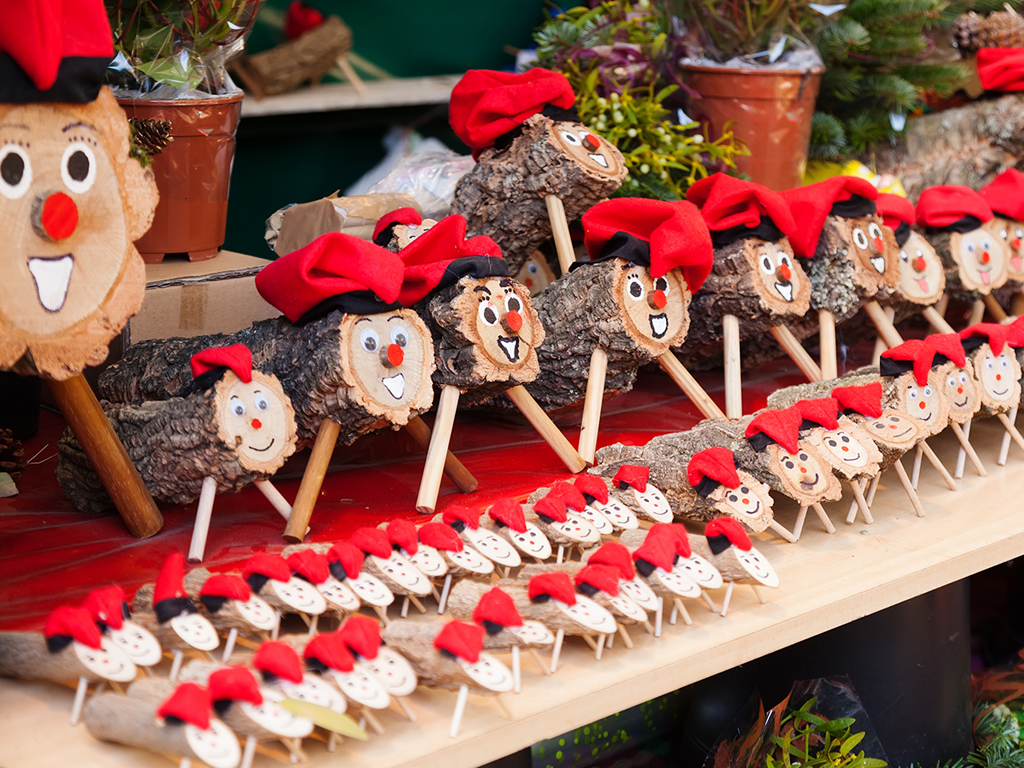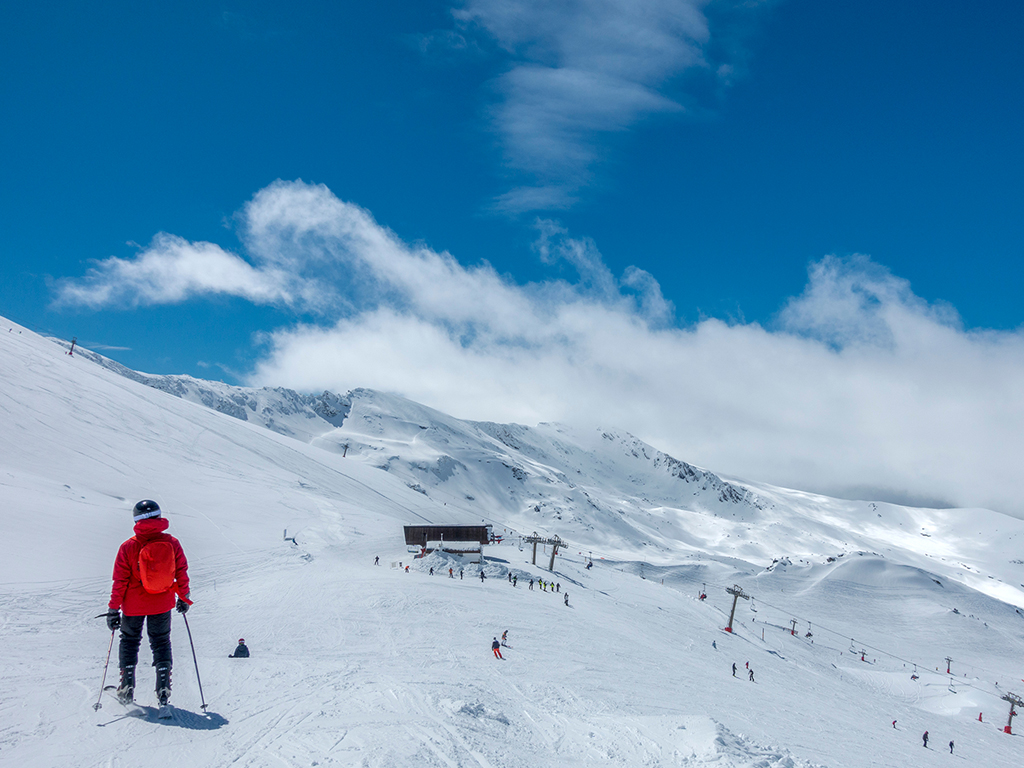


Mild climes
Spain boasts a diverse climate that varies by region and season. Winter brings a cool touch to the central and northern parts of the country, offering a milder alternative to many other cold destinations. For instance, December temperatures in Madrid usually hover around a comfortable 10 degrees Celsius. In Barcelona, winter temperatures range from 5 to 14 degrees Celsius.
Spanish cities don’t give in to winter hibernation. Instead, they maintain an energetic atmosphere with a range of cultural events, from flamenco performances to concerts. The nightlife stays active, and there are ample opportunities for dining and shopping, making it an appealing destination for winter travel.
For those seeking a different kind of winter escape, Andalusia and the Canary Islands provide mild winters along with a festive ambiance. Enjoy the sun, sea, and sand while partaking in traditional celebrations, exploring lively markets, and indulging in local culinary delights that define the charm of Spanish winter holidays.
Sparkling Christmas
Spain counts on ticking all boxes to lure travellers during Christmas. Traditional celebrations, festive lighting, Christmas markets, all dished out in warm family atmosphere positioning Spain as a compelling choice for a memorable yuletide getaway.
From late November through the first week of January, Spanish cities transform into vibrant spectacles of colour and light. Whether it’s the dazzling lights and festive decorations gracing the streets of Madrid or the brightly adorned boulevards and plazas of Seville, Spain’s holiday illuminations paint a picturesque Christmas scene. Elevate the experience with the quintessential Christmas ambiance found in sprawling markets—imagine towering cone-shaped light trees, the enticing aroma of caramelizing almonds, and intricately designed nativity scenes.
Festive traditions
Beyond the familiar customs, Spain unfolds a unique set of practices that extend the festive spirit well beyond New Year’s Eve. A standout on the Spanish holiday calendar is Three Kings Day, or Dia De Los Reyes Magos, observed on January 6 annually. This day transforms into a pulsating street festival, eagerly anticipated by Spanish children awaiting the arrival of their Christmas presents. The revelries kick off on January 5 with the Cabalgata de los Reyes Magos parade, where families line the streets to witness dancers, musicians, and regally clad horse riders on elaborate floats showering goodies on delighted children. Adding a sweet touch to the celebrations are traditional Spanish nougats, with turron, made with nuts, reigning as the season’s most popular sweet. Marzipans and crumbly cakes known as polvorones also find favour among holiday indulgences. The symbolic ring-cake of the Three Kings, resembling a king’s crown adorned with jewels and concealing a toy figurine of baby Jesus, brings an extra layer of meaning as it is believed to bring good luck for the year ahead to the fortunate finder.
New Year’s Eve
Transitioning into the New Year, or Noche Vieja in Spanish, the celebration unfolds in a distinct Spanish style. The lead-up to midnight takes on a more solemn tone, often spent with family, while the real revelry ignites post-midnight and extends until the early hours of the morning. In Madrid, the heart of the celebration is Puerta del Sol, where festive Spaniards gather as midnight approaches. With the tolling of church bells marking the new year, a unique tradition unfolds – the consumption of 12 grapes with each chime, a ritual believed to secure good luck for the 12 months ahead. The blending of tradition, family, and festive cheer paints a vivid picture of Spain’s distinctive New Year’s Eve celebrations.
Shopper’s delight
Unlike elsewhere, shops in Spain often keep their doors open well beyond 8pm, with certain establishments in bustling cities like Madrid operating seven days a week. Witness the enchanting window displays of renowned departmental chains such as El Corte Ingles. Explore local Christmas markets, where you can acquire festive trinkets and intricate nativity scenes that add a touch of tradition to your holiday decor. For those with a penchant for designer finds, the shopping villages of Las Rozas (near Madrid) and La Roca (near Barcelona) await, extending their operating hours until 9 pm. The post-Christmas period ushers in the winter sales, commencing on January 7 in most locales. However, certain cities, including Madrid, kickstart the savings extravaganza as early as January 1, allowing avid shoppers to seize the opportunity and snag incredible deals.
Mountain beauty
Uncover Spain’s well-kept secret: it ranks as the second most mountainous region in Europe. Nestled just a few hours from major cities, this enchanting land invites winter enthusiasts to soak in a plethora of snow-filled activities.
Skiing aficionados head to Baqueira-Beret, majestically perched high in the Catalan Pyrenees near Barcelona. As Spain’s largest and most renowned winter resort, it promises an unrivalled skiing experience amid breathtaking landscapes.
Spain’s portfolio of 36 mountain resorts and over 1,000 kilometres of ski runs offers variety and choice. Among the notable destinations are the Pyrenean gems of Benasque, La Molina, and Formigal, each promising a unique and thrilling skiing experience.
Go 21km southeast of Granada to Sierra Nevada, Europe’s southernmost ski resort. With its unique blend of bright sunny days, a thriving après-ski scene, and a vast 2,500 hectares of skiable terrain, it offers an unparalleled winter retreat. The ability to seamlessly transition from mountains to beaches in a single day!
Captivating carnivals
As winter settles in, Spain undergoes a remarkable transformation with the arrival of the carnival season. Commencing in late February, cities and villages across the country come alive with the spirit of celebration, featuring extravagant street parades, soul-stirring music, mesmerising theatre, and a tapestry of intriguing traditions. Canary Islands and Cadiz emerge as epicentres of the most breathtaking carnival revelry.
For more info, visit www.Spain.info/es
